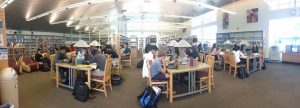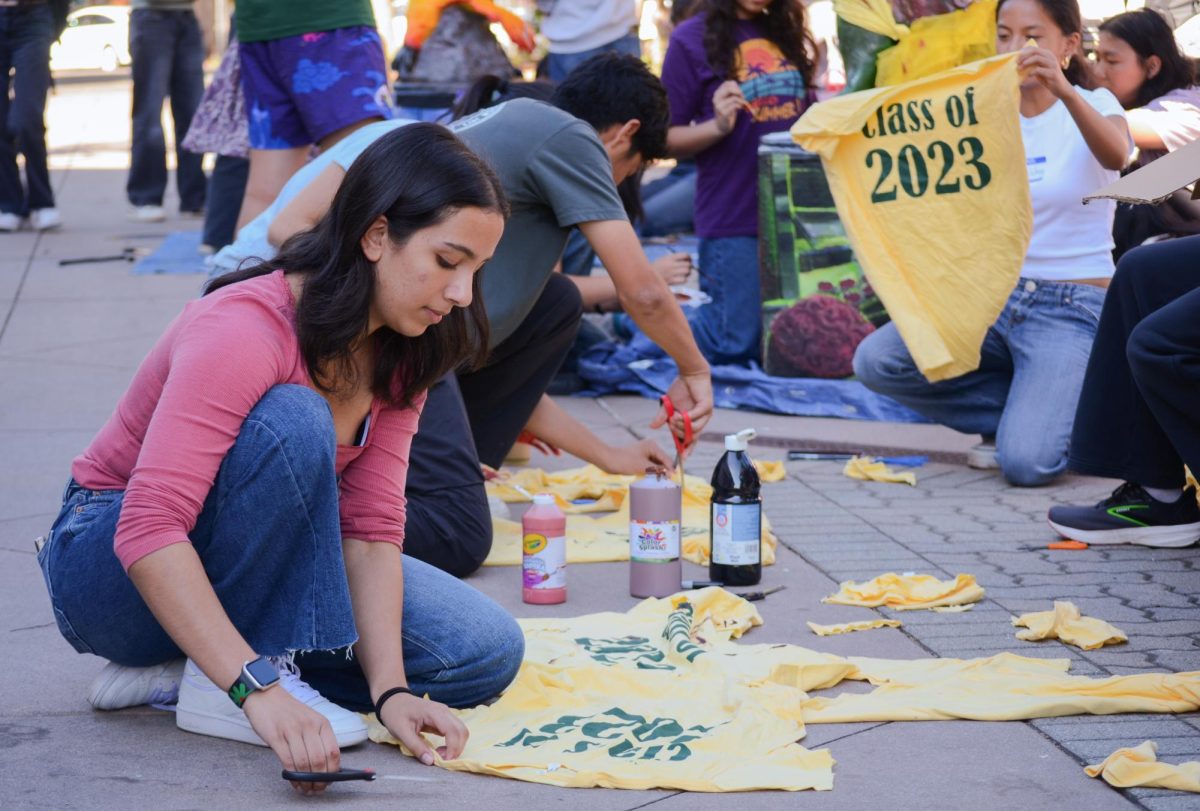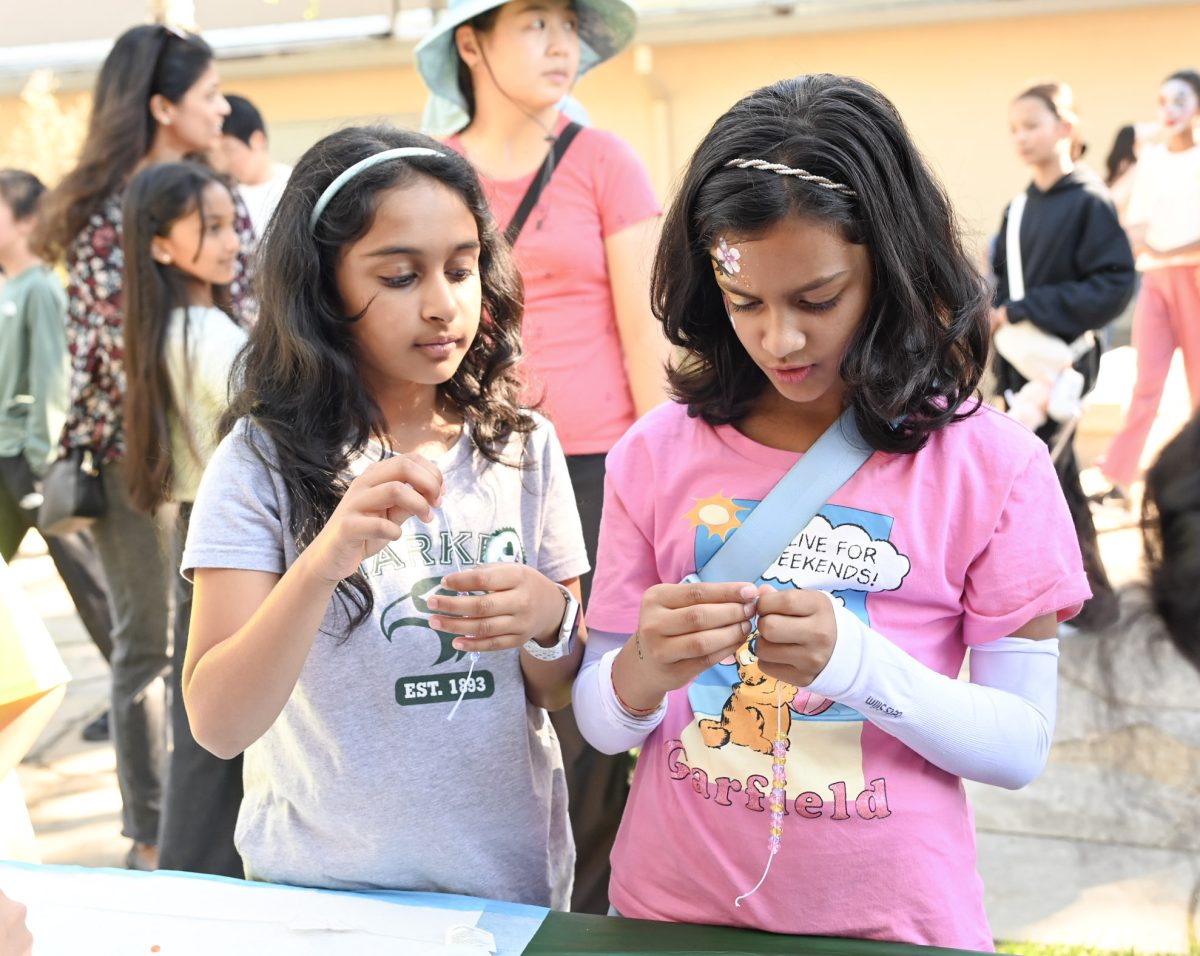Different methods of learning provide alternatives to traditional education
April 11, 2019
Sounds of jazz music filled the athletic center on March 18, as students walking in for a school meeting found an immense photo of a smiling Langston Hughes displayed on the white screen. USC Thornton School of Music professor Dr. Ron McCurdy, along with four other musicians, visited the upper school as a part of the Langston Hughes Project, which is a performance of Hughes’s jazz poem compilation “Ask Your Mama.”
Upper school orchestra teacher Dr. Dave Hart first heard about Dr. McCurdy through Yuma Sung, who graduated from Harker’s middle school and is now a pianist for the Langston Hughes project. Dr. Hart worked with English teacher Charles Shuttleworth and administration to make Dr. McCurdy’s visit an interdisciplinary experience.
“Our goal was to incorporate as many different departments as possible, not just performing arts. [Dr. McCurdy] ended up meeting with English students, and we made a master plan for classes he could do around the Harlem Renaissance and just creative writing in general,” Dr. Hart said. “He also does a lot of work with jazz, so I wanted the entire school community to hear him. Not everyone’s going to love it, but I thought his message was important.”
The Langston Hughes project is just one of many types of alternative methods of learning: education that takes place outside of the standard lecture and note-taking process that is extremely common across secondary and even developmental schooling.
The Montessori Method of Education is an approach targeted towards younger children, where students have freedom in their activities and work with natural materials rather than instruction, according to the Montessori-Northwest organization. Nearby Montessori schools include AppleSeed School in Sunnyvale and Canyon Heights Academy in Campbell.
“[Dr. McCurdy] played alongside us while also directing us, which is kind of what Dr. Hart employs in his normal classes,” said junior Joshua Valluru, who worked with Dr. McCurdy through a jazz band workshop. “I really liked it because he’s so talented and knowledgeable, and he made the whole lesson very interactive.”
Another popular form of alternative learning is the Harkness method. Originally developed at Phillips Exeter Academy in New Hampshire, it has spread across the nation, even Harker. Harkness learning consists of students sitting in an oval-shaped desk configuration, discussing ideas with one another. A teacher usually starts off the discussion with a prompt but stays out of the dialogue with minimal intervention. Harkness encourages students to come up with ideas on their own but also listen to and learn from others, according to the Exeter website.
“I think when you think of a learning-rich environment, it takes shape in a lot of different ways. It can take place in what we’re used to, in a classroom with a single instructor,” Dr. Hart said. “But I think it can also take shape in being around an expert in that field you know and checking out what they’re passionate about. The definition of education is to grow and develop, so if alternative learning does that, then that’s perfect.”
The performing arts department plans to host more performances similar to Dr. McCurdy’s in the future to further foster interdisciplinary learning and other forms of alternative education outside of a standard classroom.


















![“[Building nerf blasters] became this outlet of creativity for me that hasn't been matched by anything else. The process [of] making a build complete to your desire is such a painstakingly difficult process, but I've had to learn from [the skills needed from] soldering to proper painting. There's so many different options for everything, if you think about it, it exists. The best part is [that] if it doesn't exist, you can build it yourself," Ishaan Parate said.](https://harkeraquila.com/wp-content/uploads/2022/08/DSC_8149-900x604.jpg)




![“When I came into high school, I was ready to be a follower. But DECA was a game changer for me. It helped me overcome my fear of public speaking, and it's played such a major role in who I've become today. To be able to successfully lead a chapter of 150 students, an officer team and be one of the upperclassmen I once really admired is something I'm [really] proud of,” Anvitha Tummala ('21) said.](https://harkeraquila.com/wp-content/uploads/2021/07/Screen-Shot-2021-07-25-at-9.50.05-AM-900x594.png)







![“I think getting up in the morning and having a sense of purpose [is exciting]. I think without a certain amount of drive, life is kind of obsolete and mundane, and I think having that every single day is what makes each day unique and kind of makes life exciting,” Neymika Jain (12) said.](https://harkeraquila.com/wp-content/uploads/2017/06/Screen-Shot-2017-06-03-at-4.54.16-PM.png)








![“My slogan is ‘slow feet, don’t eat, and I’m hungry.’ You need to run fast to get where you are–you aren't going to get those championships if you aren't fast,” Angel Cervantes (12) said. “I want to do well in school on my tests and in track and win championships for my team. I live by that, [and] I can do that anywhere: in the classroom or on the field.”](https://harkeraquila.com/wp-content/uploads/2018/06/DSC5146-900x601.jpg)
![“[Volleyball has] taught me how to fall correctly, and another thing it taught is that you don’t have to be the best at something to be good at it. If you just hit the ball in a smart way, then it still scores points and you’re good at it. You could be a background player and still make a much bigger impact on the team than you would think,” Anya Gert (’20) said.](https://harkeraquila.com/wp-content/uploads/2020/06/AnnaGert_JinTuan_HoHPhotoEdited-600x900.jpeg)

![“I'm not nearly there yet, but [my confidence has] definitely been getting better since I was pretty shy and timid coming into Harker my freshman year. I know that there's a lot of people that are really confident in what they do, and I really admire them. Everyone's so driven and that has really pushed me to kind of try to find my own place in high school and be more confident,” Alyssa Huang (’20) said.](https://harkeraquila.com/wp-content/uploads/2020/06/AlyssaHuang_EmilyChen_HoHPhoto-900x749.jpeg)












